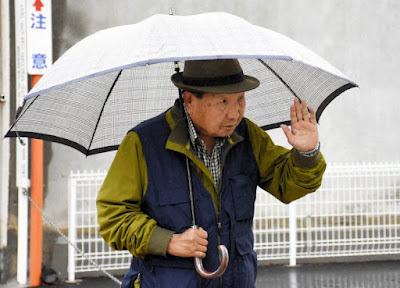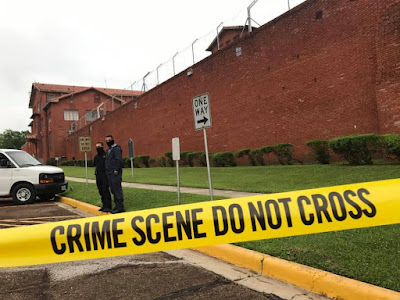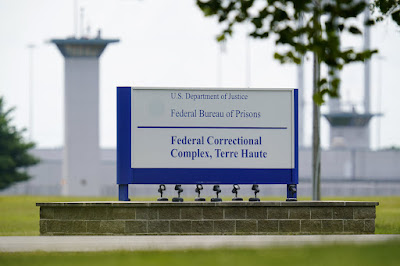Only about 2,800 U.S. prisoners are on death row today, and only 31 were sentenced to death last year — which is remarkable. In the 1990s, death rows reached over 3,500 prisoners; several hundred were sentenced to death each year. This is a cause for celebration. But we should think carefully about what we have largely replaced death row with: life row.
More than 50,000 prisoners are serving life without parole in America today — an all-time high. According to a study by the Sentencing Project, most were convicted of murder. Even if they are guilty, they will not have the chance to argue against sentences that offer them no possibility of release or rehabilitation. Indeed, many thousands were convicted of nonviolent crimes, such as property offenses or drug offenses, and many were convicted of sexual assault, robbery or kidnapping. An additional 150,000 prisoners are serving life sentences, and still more are serving “virtual life sentences,” from which the prisoner will realistically never be released.
Worse still, for most lifers, no lawyers will be carefully examining the facts of their cases. As the late Supreme Court Justice Antonin Scalia put it in a 2015 opinion, “The reality is that any innocent defendant is infinitely better off appealing a death sentence than a sentence of life imprisonment.”
Consider the story of Joseph Sledge. He was sentenced to two life sentences in 1978 for two murders in North Carolina. The only problem? He was innocent.
The evidence against Sledge was thin. Two jailhouse informants testified that he had confessed to the murders in detail. They denied they had been promised anything in return for their account. Before trial, a forensic analyst compared bloody shoeprints from the scene to Sledge’s shoes, and fingerprints and palm prints. None matched Sledge. But a jury convicted him.
Since Sledge received life sentences, he was not entitled to lawyers once his appeals were over, which death row inmates are entitled to receive under state and federal law. So once his appeals finished, no one else was working on his case at all — he filed habeas petition after petition, by himself. The judges summarily dismissed all his claims.
Finally, Sledge’s handwritten letter caught the attention of a lawyer with the North Carolina Center on Actual Innocence, who checked to see if any evidence remained in the case. Sledge had been asking for DNA testing for years, but the State claimed that it had gone missing. The Center had the power to investigate evidence, and its lawyers were able to locate some, including an envelope that sat high on a shelf in the court clerk’s office, which included a crucial set of hairs left by the murderer.
In 2015, after Sledge obtained DNA tests on those hairs, he finally received an exoneration and his freedom. (Investigators also uncovered that the jailhouse informants had actually been offered thousands of dollars in reward money and early release in exchange for falsely implicating Sledge.) These severe sentences levied on prisoners like Sledge offer no possibility for rehabilitation. They also fill our prisons with an aging population. According to the federal Bureau of Justice Statistics, the number of people 55 or older sentenced to more than one year in prison surged 400% between 1993 and 2013, to more than 130,000. These elderly prisoners have greatly increased burdens on the prison system, in part because of the medical care they require.
States are just beginning to rethink the need for such lengthy sentences. California Gov. Jerry Brown, for example, has granted parole to thousands serving life sentences, including for violent offenses. According to a 2013 California Department of Corrections and Rehabilitation report, recidivism among those paroled lifers has been extremely low, and “markedly” less than that of typical released prisoners.
Perhaps someday the U.S. Supreme Court will reconsider many of the mandatory life-without-parole sentences adopted in this country. Challenges continue to be brought against life-without-parole sentences for juveniles, and in its 2016 ruling in Montgomery v. Louisiana, the court held that a juvenile’s crimes must reflect “permanent incorrigibility,” and that such sentences should be reserved for only “the rarest offenders.”
The rise of life row suggests that ending the death penalty is a “bubble under the rug” problem. You can tamp down on it, but the bubble just moves farther along — or worse, it grows.
Source: TIME, Brandon L., October 26, 2017. Mr. Garrett is a professor at the University of Virginia School of Law and the author of
End of Its Rope: How Killing the Death Penalty Can Revive Criminal Justice.
⚑ | Report an error, an omission, a typo; suggest a story or a new angle to an existing story; submit a piece, a comment; recommend a resource; contact the webmaster, contact us:
deathpenaltynews@gmail.com.
Opposed to Capital Punishment? Help us keep this blog up and running! DONATE!
"One is absolutely sickened, not by the crimes that the wicked have committed,
but by the punishments that the good have inflicted." -- Oscar Wilde











.jpg)
